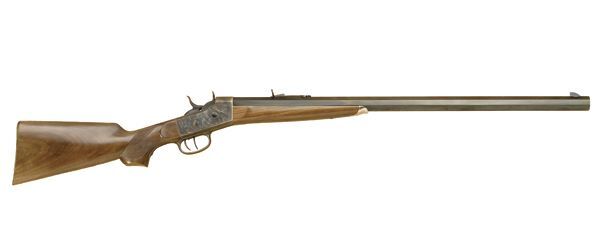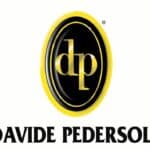
Certainly! Below is the revised article incorporating the additional historical facts, anecdotes, and technical insights while maintaining the original format and improving overall depth.
Introduction
Introduction to the Adobe Walls Rifle
The Innovation: The Rolling Block Mechanism and Sharps Falling Block
Among the firearms used at Adobe Walls was the ingenious Adobe Walls Rifle, a revolutionary design by Joseph Rider for Remington Arms. Unlike earlier breechloaders or muzzleloaders, the Adobe Walls Rifle offered a simple, strong, and reliable method for loading and firing a cartridge.
However, another firearm stole the spotlight at Adobe Walls—the Sharps Model 1874, utilizing a falling block action. Unlike the rolling block, the Sharps design featured a separate lever-operated breechblock, which provided enhanced stability and accuracy, particularly with large-caliber rounds like the .50-90 Sharps. This rifle gained legendary status at the battle due to Billy Dixon’s famous long-distance shot, which struck an enemy warrior at over 1,000 yards. Dixon himself later admitted that the shot was partly a matter of chance, but modern ballistic studies have shown that the .50-90 Sharps was fully capable of making such a hit under the right conditions. In later years, the U.S. Army recreated the shot and confirmed its feasibility.
The Adobe Walls Rifle stands as a testament to innovation and is celebrated among firearm enthusiasts. Many frontiersmen preferred the Adobe Walls Rifle for its reliability in harsh conditions.
While the Sharps was the premier choice for buffalo hunters, the Remington Rolling Block was the favorite of many frontiersmen and military forces around the world. Soldiers, settlers, and sportsmen valued the rolling block's incredible strength and simplicity, which made it one of the most reliable single-shot rifles of its time.
The Adobe Walls Rifle and Sharps rifles continue to draw interest in historical re-enactments. Both the Adobe Walls Rifle and the Sharps rifle reflect the technological advancements of their era.
Remington and Sharps: The Companies Behind the Guns
Two major American firearms manufacturers, Remington Arms and Sharps Rifle Manufacturing Company, played instrumental roles in producing the rifles used at Adobe Walls.
Remington Arms, founded in 1816 in Ilion, New York, became one of the most prolific firearms manufacturers in the world. The Remington Rolling Block rifle (aka Adobe Walls Rifle) saw service in dozens of countries, from the U.S. and Sweden to Spain and Latin America. The rifle’s ruggedness was proven in military conflicts across the world, and many of these rifles remained in use well into the 20th century.
Sharps Rifle Manufacturing Company, founded in 1851 in Hartford, Connecticut, produced some of the most accurate single-shot rifles of the era. The Sharps Model 1874 in .50-90, .45-110, and .45-120 became the preferred rifle for professional buffalo hunters. Many accounts suggest that some of the defenders at Adobe Walls also carried Sharps rifles chambered in .44-77, which was widely used before the rise of the larger .50-90. This earlier cartridge had a flatter trajectory and was still a capable choice for hunting and long-range shooting.
Although Remington and Sharps were competitors, their rifles coexisted as two of the most powerful and reliable single-shot designs of their time. The Sharps was widely considered the superior rifle for long-range accuracy, while the Remington Rolling Block was renowned for its durability and military use.
Hunters often relied on the Adobe Walls Rifle for its precision and powerful cartridges. With the Adobe Walls Rifle, hunters faced the challenges of the frontier with confidence.
Beyond Adobe Walls: Widespread Use and Variations
During the late 19th century, the Adobe Walls Rifle was compared favorably against its contemporaries.
The Remington Rolling Block and Sharps rifles had far-reaching impacts beyond a single engagement. While both designs originated in the U.S., rolling blocks saw extensive international military service, and Sharps rifles remained dominant among buffalo hunters and long-range shooters.
Rolling block rifles were produced in several configurations, including military, sporting, and target models. The .50-70 Government and .43 Spanish versions saw widespread military use, while the .44-77, .45-70, and .50-70 models were popular among hunters. In later years, Remington even adapted the rolling block to smokeless powder cartridges, such as the 7mm Mauser, making it one of the few black powder-era designs to transition into the modern age.
The importance of the Adobe Walls Rifle in shaping American history is profound.
The Sharps Model 1874 was overwhelmingly associated with buffalo hunting, where its massive cartridges could drop a 1,500-pound bison with a single shot. Buffalo hunting was one of the deadliest professions on the frontier, and hunters using Sharps rifles wiped out millions of bison in less than two decades. Many Sharps rifles were equipped with double-set triggers, allowing for an incredibly light pull, which improved precision when firing at long distances.
Many modern reproductions of the Adobe Walls Rifle capture its original design elements. Understanding the Adobe Walls Rifle helps us appreciate the history of American firearms.
Competition and Similar Designs
The late 19th century saw fierce competition among firearms manufacturers. Lever-action rifles like the Winchester 1866 and 1873 were faster to fire but lacked the power and range of single-shot rifles, making them less suitable for buffalo hunting. The Springfield Model 1873 ("Trapdoor") became the standard rifle of the U.S. Army, but its action was less robust than the rolling block. The Winchester 1885 High Wall, designed by John Browning, was inspired by the falling block design of the Sharps and later became a favorite among long-range target shooters.
The Adobe Walls Rifle is cherished by collectors and historians alike for its craftsmanship.
The Remington Rolling Block’s extreme ruggedness kept it in military service into the early 20th century. Spanish colonial troops were still using .43 Spanish Rolling Blocks during the Spanish-American War (1898), despite facing American soldiers armed with modern bolt-action Krag-Jørgensen rifles.
The Inevitable Evolution: Replacement and Legacy
By the early 20th century, single-shot rifles gave way to bolt-action designs like the Mauser 98 and Springfield 1903, which offered faster reloading and improved firepower. Despite this, the rolling block and Sharps rifles remained relevant:
- The Remington Rolling Block persisted in military use in Latin America and Spain for decades.
- The Sharps rifle, despite being discontinued in the late 1800s, was revived for long-range shooting competitions.
- Modern replicas of both rifles remain popular today, with companies like Shiloh Sharps, Pedersoli, and C. Sharps Arms producing high-quality reproductions.
The influence of these rifles can also be seen in modern single-shot target rifles, such as the Winchester 1885 High Wall, which borrowed elements from both designs.
More Than Just Adobe Walls: A Lasting Impact
Today, the Adobe Walls Rifle is celebrated in various collections across the country. The legacy of the Adobe Walls Rifle continues to inspire modern firearms enthusiasts. As the Adobe Walls Rifle evolves, its historical significance remains unchallenged.
While the term "Adobe Walls Rifle" is often used in reference to rolling block rifles, it is the Sharps rifle that truly defined the battle. Nonetheless, both rifles played vital roles in firearms history, marking the transition from muzzleloaders to more sophisticated designs.
The legacy of these firearms is preserved today by collectors, historians, and black powder shooting enthusiasts, ensuring that their role in shaping the frontier will never be forgotten.
Conclusion: A Legacy Preserved
The Adobe Walls Rifle remains a symbol of the powerful single-shot rifles of its time.
The firearms of Adobe Walls hold a special place in American history. The Sharps "Big Fifty" and Remington Rolling Block were not just tools of war and survival but also testaments to the ingenuity of their era. Their influence on firearm development, military history, and hunting culture remains undeniable, and their stories continue to captivate enthusiasts to this day.
Cimarron imports a very nice replica of the Adobe Walls rolling block rifle, that can be found here.
Read more about the battle of Adobe Walls:


If you know of any forums or sites that should be referenced on this listing, please let us know here.



